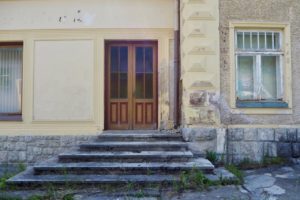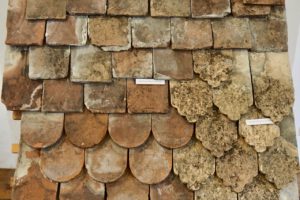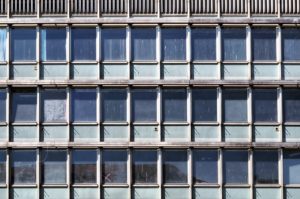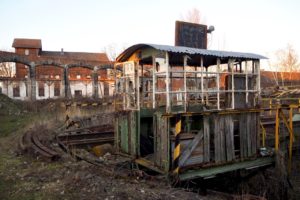Layers of Time
Excerpts from an interview with Tahereh Holmes on July 16th, 2022
By Leila Behjat and Sam Bennett

Tahereh Holmes is an architect working in preservation for the municipality of Munich, Germany. Tahereh’s work credo lets her look at our current built environment through the lens of “what were we given” and “what will we pass on”. The initial built intention invariably will evolve because deterioration is a natural process of aging.
”We can’t avoid it because every material ages.”
Additionally, how we deal with it has an effect.
“With every restoration there is a new layer that is put on the building and one has to accept that materials and products age, which is nice and something we also want. But that is a very extreme kind of walking on the edge thing to distinguish.”
And Tah stresses the correlation with our own approach to aging and wanting to preserve oneself and its environment at times:
“Just like us humans, we try to distinguish between maturing, but not wanting to age.”
What do we keep? What do we let go? How does a decision affect a future effort of upkeep and maintenance? Will the cost saved today bring a great burden to the next generation of care-takers? It feels like that is an ever present question in Tahereh’s evaluations and work.
“We’re imposing costs on the next generation that they may not be able to bear.
You have to think about it from the very beginning, right through to the next generation.”

It is a recurring conclusion which we also encounter in our conversation with Nicole (link to Nicole’s interview): tearing down and building anew is more “cost efficient” in the way we calculate construction today: cost for the builder or developer.
“But what if throwing things away would be really expensive”
is the question Tahereh posts, making us realize that, indeed, in many aspects of our lives, throwing something away rather than making a supreme effort to give it renewed purpose, seems easier.
And she speaks from current experiences, too, as today’s building material, independent of the creative intent behind it, can either be a result of expert craftsmanship or poor construction and depending on that, the effort to upkeep it varies greatly.
“[It is] such a pressure for society, too, that you can also afford it, can also pay for it.”

Reflecting on Tahareh’s practice, one wonders about the buildings currently in development and how they too will be part of this process.
“Although I wasn’t actually aware of it at the time, I can remember that it was one of my very first building projects, where I was sitting there quite dutifully, drawing details of some windows, of some high-tech new building, where I then thought to myself, ‘How do you get this window out again at some point?’ […] so perfectly plastered in, nothing, no details, invisible. And then I thought to myself, If it is broken at some point, how far do you have to take it apart again to get this one component out?”
The true cost of maintenance seems far more nuanced and entangled than simply following the zeitgeist and calling it a day. Will the company that installed the facade system still exist in 15 years and provide the unique facade element? To illustrate what it means to restore what was built yesterday, today, think of plaster on the exterior wall. Building codes and availability of products today will differ from what was once used. So, to be true to the past, to use the same grain size, one has to break code. Yet, there are less craftspeople able to do these jobs.
“This aging and this patina are very strongly connected to a collective memory and it’s this collective memory that is extremely potent in shaping identity for a place or for a building and for oneself.”

Instead of overhaul renovations that reveal society’s neglect, perhaps with steady “bit-by-bit” upkeep, character and knowledge can be kept alive? Are we socially and culturally equipped to hold that tension? Of not getting it done and putting a check mark?
For your consideration:
Layers: how maintenance often expresses itself
Interconnectedness: Decisions made in the past influence the true cost of maintenance today. Decisions made today will pass on this true cost to the next generation of caretakers.